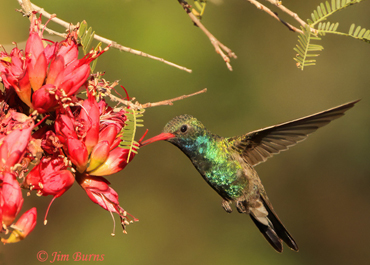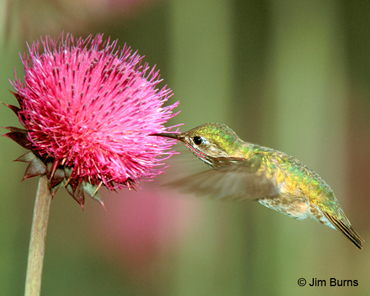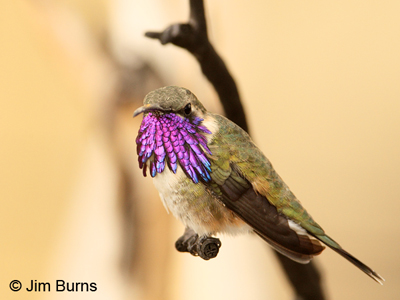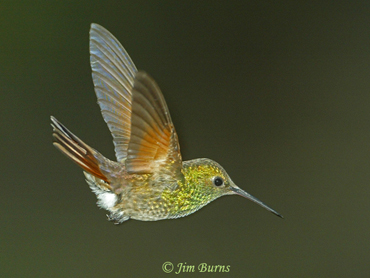Broad-billed Hummingbird male at Karoo Boer-Bean blossom----9400 |
Calliope Hummingbird male at thistle |
I’ve written in this column recently about the special physical adaptations of woodpeckers and owls. Here are some unique features of hummingbirds not generally known or appreciated.
Do any birds hover as long as hummingbirds? No. Some raptors and flycatchers can hang for seconds, but hummers spend up to 90% of their flight time hovering as they feed on flowers. Adaptations that allow them this evolutionary advantage for their unique environmental niche are three: a unique wing design, an enlarged heart, and air sacs in hollow bones.
Do any birds fly faster than a Peregrine? A researcher studying Anna’s Hummingbirds has proven the male of this species, diving during its mating display, reaches a maximum speed of 385 body lengths per second. That makes Anna’s the fastest bird in the world.
Rather than detailing our first encounter with each of Arizona’s hummingbird species as I did last month with the owl family, I’m going to recount my most memorable experience with each of the eleven nesting species, plus Calliope and Rufous which only pass through Arizona on migration but are among my favorites. Here they are, in taxonomic order.
Berylline Hummingbird—I traipsed up the Vault Mine Trail in Madera Canyon carrying an empty feeder and a jar of hummingbird food to get a shot of the female that nested there one year. When I showed the photographs to George West, he discovered it was the same one he had banded down below and mistakenly sexed out as a male!
Violet-crowned hummingbird—One summer during the monsoon, as I walked a trail along Sonoita Creek, I found a Violet-crowned sitting on the ground in a pile of leaves. At first assuming it was injured, I waited and then watched it rummage in the leaves with its bill. After it left I rummaged around myself and discovered an anthill. The bird came there for ants every fifteen minutes for three mornings in a row. Who knew?
Lucifer Hummingbird—After seven years with several sightings of females only, I finally saw my first male in a monsoon storm in the Chiricahuas, and later that summer was lucky enough to get a photo of a different male resting at a perch, off the feeders, at Mary Jo’s Ash Canyon Bird Sanctuary. Seen in good light this has to be Arizona’s most spectacular hummingbird.
Lucifer Hummingbird male |
Berylline Hummingbird male in flight |



